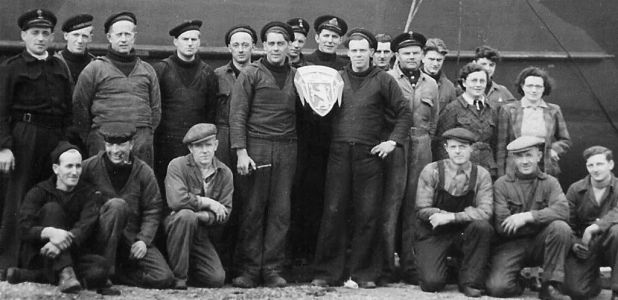
Some of the “Shetland Gang” crew pictured at the pier in Scalloway in 1944
On this, the 80th Anniversary of VE (Victory in Europe) Day, the Liberation Convoy 2025 of five historic Norwegian veteran vessels, alongside partners from both Norway and the United Kingdom, is commemorating Anglo-Norwegian heroism on the North Sea during the Second World War. The ships sailed in convoy from Bergen, Norway to Lerwick, Shetland, where they are celebrating 8 May, Liberation Day. Following the ceremony, the vessels will split up to visit as many ports as possible before returning to Norway.
These historic ships are commemorating the convoys nicknamed the “Shetland Bus” made up of fishing boats and other small vessels that sailed from Scotland’s most northerly islands to deliver valuable cargo and special agents across the North Sea to coves and fishing ports 200 miles away along the coast of Norway, following the invasion of Norway in April 1940.
Crossings were mostly made during the winter under the cover of darkness. This meant the crews and passengers had to endure very heavy North Sea conditions, with no lights and constant risk of discovery by German aircraft or patrol boats. There was also the possibility of being captured whilst carrying out the mission on the Norwegian coast.
Early on, it was decided that camouflage was the best defence, and the boats were disguised as working fishing boats and the crew as fishermen. The fishing boats were armed with light machine guns concealed inside oil drums placed on deck.
Between 1940 and 1945, the Shetland Bus made 200 North Sea crossings, transporting hundreds of resistance agents, tonnes of weapons and supplies, and rescuing more than 300 Norwegian refugees fleeing the occupation, as noted by the BBC.
A short documentary from 2018.
Thanks to Alaric Bond for contributing to this post.
